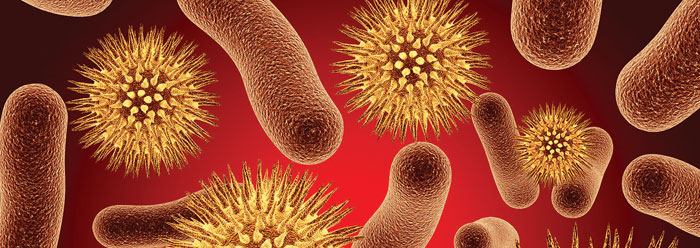Bacterial survival in antibiotics has been taken as proof of evolution in action. But in-depth studies of the specific mechanisms for antibiotic resistance in bacteria show that no evolutionary processes are involved. One recent study even mentioned the possibility that bacteria are able to fine-tune the shapes of their own biochemicals in order to circumvent the harmful effects of antibiotics.
Antibiotics are tiny chemicals that can kill bacteria, and their use can wipe out almost all the individuals of a bacterial population. But a few bacteria sometimes survive and grow in the presence of the antibiotic, although at a slower pace.
How do bacteria acquire antibiotic resistance? Often, a small number were already resistant before the antibiotic was applied. There is no innovation in such cases, but merely a shift in which strain of bacteria dominates the habitat. That’s not evolution.
Sometimes the DNA of bacteria changes, and this can alter their protein shapes. Though these subtle alterations almost always decrease the protein’s job efficiency, they can ward off antibiotics that would ordinarily disrupt certain proteins.
At times DNA changes are random, in which case they are called mutations. But DNA changes are often non-random, which means that they may have been designed to change. Neither scenario helps evolution, which must explain how whole genes and their encoded proteins came into existence in the first place, not how already existing proteins lose efficiency.
In the recent study, investigators determined the mechanisms behind methicillin resistance in a strain of common skin bacteria.1 The antibiotic methicillin kills by attaching to a certain site on bacterial ribosomes, jamming their activity. Ribosomes are molecular machines required to build proteins, and are partly made of nucleic acids that require special changes before they can work properly.
For example, a "methyl group"…in essence, a methane molecule…must be chemically bonded at a specific site. In the wild strain of these bacteria, a protein named RlmN adds a methyl group to carbon number two of the 2503rd ribosomal nucleic acid. Thus, RlmN helps assemble the ribosome, which in turn assembles other proteins, including RlmN.
But in the resistant strain, a very similar protein named Cfr adds the methyl group to carbon number eight instead. This tiny shift keeps methicillin from "clogging" the ribosome and ultimately destroying the bacterium. The resistant bacteria have Cfr and they can therefore continue to survive, although their less-efficient ribosomes manufacture proteins more slowly.
In the researchers’ scenario, RlmN supposedly evolved into Cfr. But the actual changes from RlmN to Cfr involved a loss of information!2 RlmN had some flexible regions that ensured that the methyl group was added to carbon number two. Cfr no longer has these regions. That’s no help to big-picture evolution, which must account for the origin of all the critical spatial and "electrostatic surface potential" distributions in these proteins…without any intelligent source.1
The study authors deduced that, although certain regions had been removed from RlmN to turn it into Cfr, nothing was lost from its crucially structured core. They said that these changes suggested "an extended interaction surface to fine tune control of substrate [ribosome] binding and site selectivity."1
The mere presence of such tiny machines is clear evidence of the Creator’s handiwork, but even clearer evidence of super-intelligent design are systems that fine-tune the shapes and activities of those tiny machines so that they can adapt to different situations in the cell. Adaptive programming, not evolution, appears to be responsible for the ability of these bacteria to survive in methicillin.
References
- Boal, A. K. et al. Structural Basis for Methyl Transfer by a Radical SAM Enzyme. Science Express. Posted on sciencemag.org April 28, 2011, accessed April 28, 2011.
- Thomas, B. Antibiotic Resistance in Bacteria Did Not Evolve. ICR News. Posted on icr.org May 10, 2011, accessed May 19, 2011.
* Mr. Thomas is Science Writer at the Institute for Creation Research.
Cite this article: Thomas, B. 2011. Antibiotic Resistance in Bacteria Shows Adaptive Design. Acts & Facts. 40 (7): 18.







